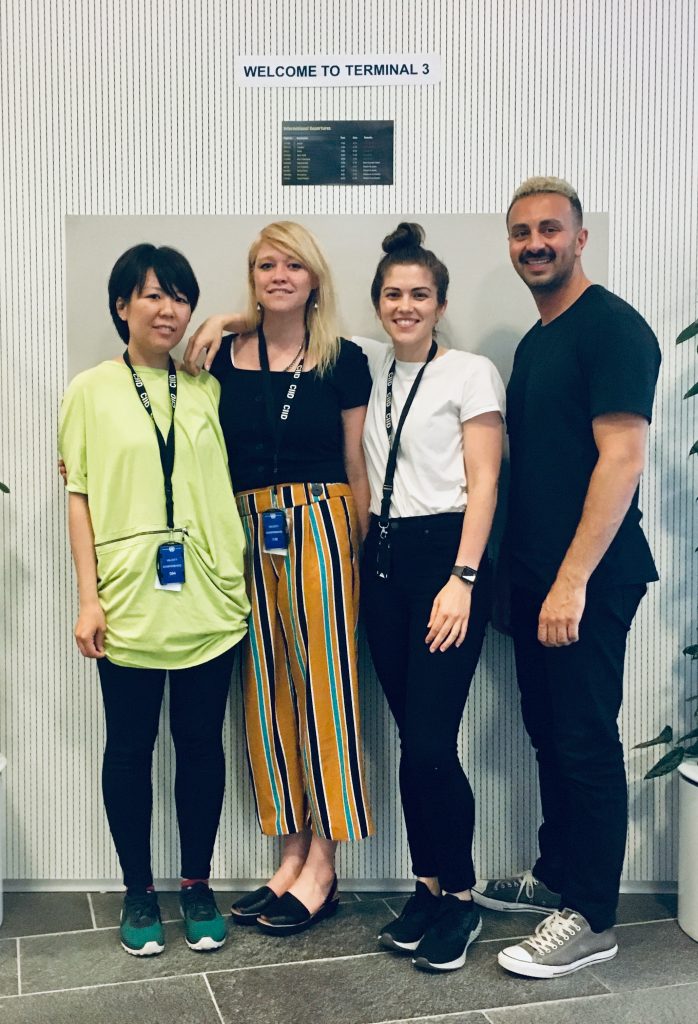Designing an interactive space to reveal inherent biases around gender.
Context
As part of the Copenhagen Institute of Interaction Design (CIID) Summer School program, I worked with designers, consultants and programmers to understand how different sensory elements can be deployed to create an immersive environment with the aim to deliver a unique and memorable user experience.
After learning about a variety of programs, tools and techniques participants formed teams and were tasked with developing an interactive space that would promote one of the United Nations’ (UN) 17 Sustainable Development Goals. Our team composed of three women and one man (myself) chose to craft a space that would raise awareness of the UN’s goal to achieve gender equality and empower all women and girls.
Role
As the only man in our group of four people, the initial temptation was to offer the male point of view as we considered different scenarios, however, our group agreed early on to focus on gender as a spectrum and challenged ourselves to consider the simple ways in which we encounter the binary labels of male and female on a daily basis.
As a result, I worked with my fellow team members to explore how we could use a physical space to enable users to identify and challenge the inherent biases they carry around gender.

Process
In our initial discussions of the various issues which affect gender equality we considered how the choice of gender pronouns has led to a broader discussion of the gender spectrum and the effects of binary gender classification between men and women. We were compelled to explore this issue further after noticing a peculiar phenomenon within the UN’s office in Copenhagen: although each bathroom stall contained a full toilet and sink, they were still labeled as male or female. It seemed like a peculiar choice given the UN’s own objectives in support of gender equality. As a result, we began to imagine all the different ways in which people are forced to make a binary choice when it comes to gender.
In determining how to turn this insight into an interactive space we considered how we might use a game to encourage users to examine their inherent biases in a way that would elicit surprise and curiosity, rather than make them feel judged.
In order to address our initial concerns that the game concept might be overly simplistic we decided to engage our fellow classmates in the first iteration, which required them to move from one side of the room to the other to indicate whether they considered an image to be inherently masculine or feminine. To our surprise an interesting dynamic emerged: while the group began the game by making binary choices, social pressure appeared to kick in as people began to converge in the middle of the room, refusing to make the choice between the prescribed options. As a result, we modified the game in two ways: it would be played by individuals, not groups; and players would be forced to make a binary choice in order to experience the associated discomfort that might result.
After modifying the game to include images, words and sounds, additional user testing indicated we could use a time constraint to further expose the player’s unconscious biases, as many users were taking considerable time to make their choices. As a result, we crafted a scenario in which airline passengers are given the option to skip a long security line if they participate in a game to categorize inputs as quickly as possibly. With these changes in place, the game became more compelling as users were forced to make a quick reaction, without overthinking.
In Action
To test our programming and creativity skills we designed a simple device called the Mood Meter which allows users to register their satisfaction with a service through physical touch by giving a high five for good service or a head smack for poor service. Simple, fun, and to the point.

In designing our interactive space around gender bias, we found inspiration in UN City building in Copenhagen. Despite the fact that each bathroom stall contained a full toilet and sink, each unit was labeled as either male or female, prompting us to consider other binary choices we’re forced to make on a daily basis.
In order to test our initial idea to use a game to reveal inherent biases around gender, we enlisted our fellow classmates to participate in the first iteration. It was interesting to observe how quickly the group began to cluster in the center of the room, unwilling to make the binary choice we prescribed in our instructions. During a subsequent debrief we discussed why they responded in certain ways, adjusting our concept in response to their feedback.

In order to increase the emotional reaction associated with being forced to make a binary choice we needed to introduce a sense of urgency into the design of our interactive space. As a result, we crafted a scenario in which a user could skip a long security line at a busy airport by playing our game as quickly as possible, providing them with an incentive to make rapid decisions without overthinking individual choices.

CIID Summer School offered a fabrication lab to build physical objects to incorporate into our projects. Above is an image of a button being rendered for 3D printing for use in our game.
The video above captures user reactions during the game, which covered a broad range of emotions. Watch closely to see how the same item elicited different responses among male and female players.
Outcomes
Following several iterations of our game, we programmed it to track user response data for discussion during a final stage which involved a debrief between the player and a member of our team to contextualize the inputs and the responses they solicited. By doing so, we were able to add another layer to the experience and further raise awareness of the different ways in which we are forced to make a binary choice around gender, while creating an opportunity for players to share their views in a safe and non-judgmental environment.
One particularly important outcome of our interactive space was the realization that our gaming method made the subject of gender equality more accessible and allowed people to discuss it more freely than they might have felt they could otherwise. By turning the focus towards the player’s inherent biases we were able to make the subject more familiar and invite them to consider gender equality through their own lens.
Future versions of the model can be used to correlate trends among players to determine which items elicit the greatest tension (as measured by response times) and could be shared with researchers. There is also an opportunity to integrate machine learning into the program to measure physical reactions to different inputs through facial recognition.
In the end, we discovered how uniquely personal and complex gender is to people and felt we were successful in helping participants challenge their inherent biases and perceptions.
For our final presentation, we asked one of our fellow summer school participants to play the game while the remainder of our class watched. The video illustrates a common finding: tension exists when the stereotypical response conflicts with one’s lived experience. For instance, several players selected “female” when shown a kitchen, but would later state that the men in their lives are responsible for cooking, causing them to second-guess their initial impulse.




